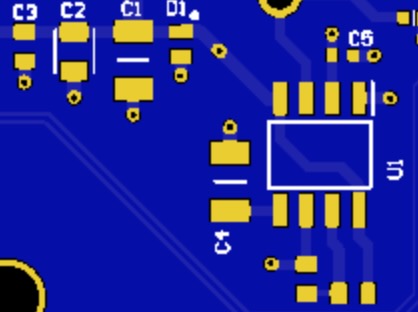Exact Measurement? For Innovation, and Progress
A coherence-based Noise Reduction System, approaches a time-independent reference, or exact standard, for the measurement of time. Download summary of scientific research here.
A Truly Transformative Technology Changes Everything For The Better Without Disrupting Anything

Areas of Application of Coherence Technology Pdf download here: https://www.upgradingtechnology.com/support-files/areasofapplication.pdf
What kind of transformative technology changes everything?
Here we see the value of reducing measurement uncertainty by increasing accuracy and precision simultaneously; this one improvement, transforms everything, from the most fundamental level of the effectiveness and efficiency of technological systems, to the comfort and productivity of the end-user.
When you increasing accuracy and precision simultaneously in technology, you increase phase coherence and stability over time across networks. This one upgrade is akin to sharpening and calibrating a tool to perfection. In the context of transformative technology, this not only optimizes the tool’s individual performance, but it also dramatically improves the overall system's functionality.
"Critically Important In All Technological Applications"
Accuracy refers to the closeness of a measured value to its true value, while precision relates to the repeatability of measurements or the distribution of values. Both are critically important in all technological applications. Increased accuracy ensures that measurements are correct and reliable, while enhanced precision guarantees that these measurements are consistent.
To understand the importance of this, consider the example of GPS technology. GPS systems need to be both accurate and precise to correctly guide users to their destinations. An accurate system will lead you to the correct location, while a precise one will do so consistently. Improving both aspects simultaneously will ensure a reliable and trustworthy navigation system that users can depend on.
In the field of manufacturing, particularly where automation and robotics are heavily utilized, accuracy and precision have paramount importance. A robotic arm used in an assembly line needs to be both accurate, to pick up and place components in the correct locations, and precise, to do this reliably time after time. Improving these aspects results in high-quality products, efficient production, reduced waste, and lower costs.
Similarly, in healthcare, medical devices like scanners, monitors, and surgical tools must offer accurate and precise readings and controls to ensure patient safety and the effectiveness of treatments.
In machine learning and data analytics, enhancing accuracy and precision is essential for making reliable predictions and gaining meaningful insights. An algorithm that can accurately predict outcomes and do so with a high level of precision is of great value in sectors ranging from finance to healthcare, retail, and beyond.
A Truly Transformative Technology Affects All Industries
By increasing accuracy and precision in transformative technologies, we enhance their reliability, usability, and value. As a result, these optimized technologies contribute towards making our cities smarter, our industries more efficient, our health care more effective, and generally improving the quality of life.
A transformative technology that reduces measurement uncertainty is crucial to every facet of innovation, from product design to large scale industry operations. Measurement uncertainty can be a major obstacle in many fields, potentially leading to inaccuracies, inefficiencies, and compromised user experiences. The ability to precisely measure and analyze various metrics is a key aspect of technology development, as it forms the foundation for enhancing performance, usability, and sustainability.
One Component For Innovators And Product Developers To Fine-tune Products And Services
This particular CT transformative technology does not aim to overhaul existing systems completely. Instead, it targets one fundamental aspect—accuracy of measurement—and through this, achieves broader, far-reaching changes. In other words, it does not disrupt; it refines. It fine-tunes and optimizes. By assuring a high level of accuracy and reliability in measurements, it enables other technologies to function at their highest possible level of efficiency and sustainability.
Its potential application is extensive. For product designers and innovators, it can be integrated into the design and development process to refine product specifications, improve functionality and enhance the user experience (UX). It also holds potential for making technologies, products, and services more eco-friendly. By providing precise data, it can help identify areas where resources are being overused or wasted, allowing for the creation of more sustainable systems.
By introducing A transformative technology that reduces measurement uncertainty, the path to sustainability becomes much clearer. With more precise and accurate measurements, we can design better, waste less, and generate less pollution. It underpins the philosophy that every incremental improvement, no matter how small, can contribute to a broader, transformative impact on a sustainable future.
As such, this transformative technology that tackles measurement uncertainty plays a vital role in turning all technologies, products, and services into sustainable and transformative tools. Through it, the vast potential of technology can be harnessed effectively and responsibly, propelling us towards a future characterized by sustainable and user-friendly solutions.
The CT transformative technology that reduces measurement uncertainty amounts to simply adding a small but crucial component into an intricate system. Integrating this component into existing systems can create substantial overall improvements.
In financial terms, this is cost-effective as it requires a minimal initial investment but offers vast benefits. One such improvement is that products and services work better due to enhanced precision and reduced errors. Greater clarity in results, combined with heightened stability, leads to efficiency gains and cost reductions over the long run.
Transformational Technology: Transforming The IoT
An excellent illustration of the application of this technology is the Internet of Things (IoT). The IoT comprises about 40 billion connected devices worldwide, from household appliances to industrial equipment, all of which need to communicate effectively. Any measurement uncertainty could lead to miscommunication, inefficiencies, or even system breakdowns. By reducing this uncertainty, each device's compatibility with the broader network is improved, leading to smoother overall operations.
Take, for example, a smart city. Like a finely tuned orchestra, every component – from traffic lights to power grids – must operate in perfect harmony. A single misstep, a single out-of-tune instrument, can disrupt the entire symphony. Reducing measurement uncertainty is like the conductor, ensuring every instrument hits the correct notes at the right time, resulting in a seamlessly functioning smart city.
Another instance is autonomous vehicles, which rely on precise measurements to navigate roads safely. By reducing measurement uncertainty, we can ensure that these vehicles respond accurately to their environments, enhancing the safety and efficiency of our transport networks.
This technology can also help combat information overload, a growing issue in our data-driven world. By increasing precision, we can streamline the information we process, focusing only on what's most relevant. This is particularly beneficial in machine learning and data processing, where reducing measurement uncertainty can lead to more accurate predictions and insights.
Reducing measurement uncertainty by introducing a small CT component into a system optimizes its entire functioning. It's an investment that bears fruitful returns in the form of enhanced performance, sustainability, and cost-effectiveness, paving the way for a smarter, more precise, and more sustainable world.
The CT component increases accuracy and precision simultaneously to support sustainable innovation in technology industries. Click here to learn more about the CT Evaluation Unit
